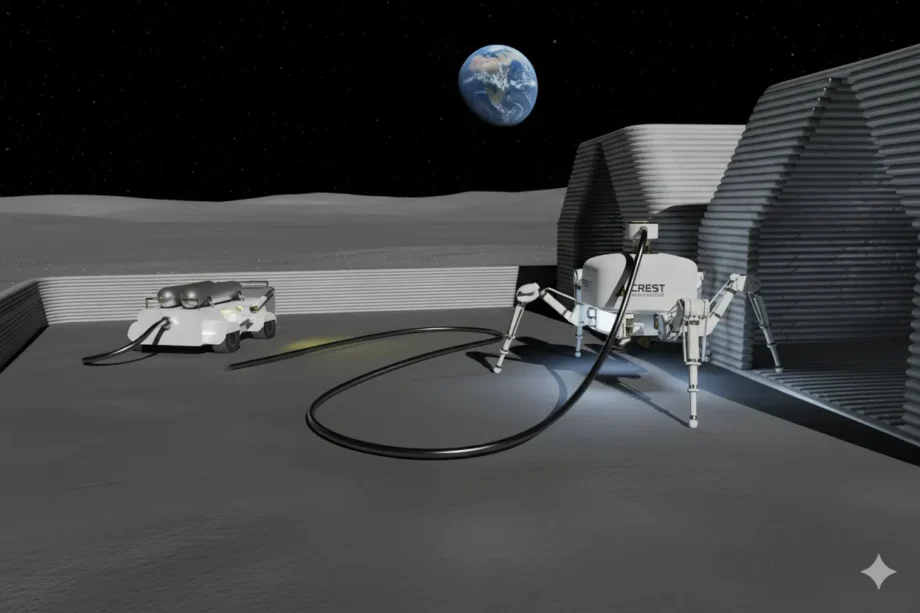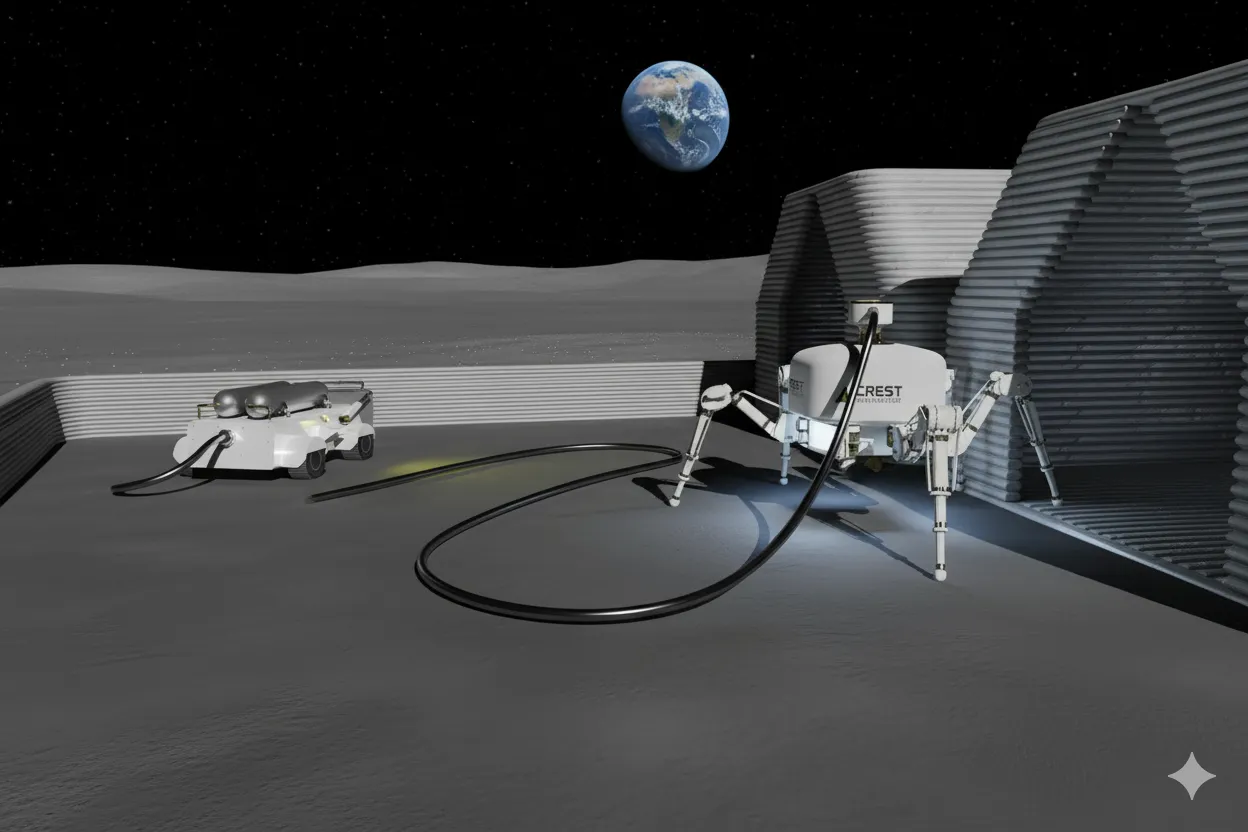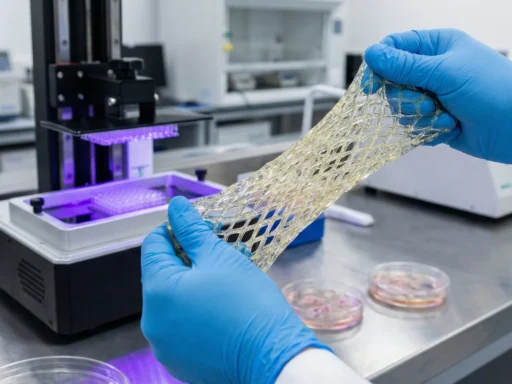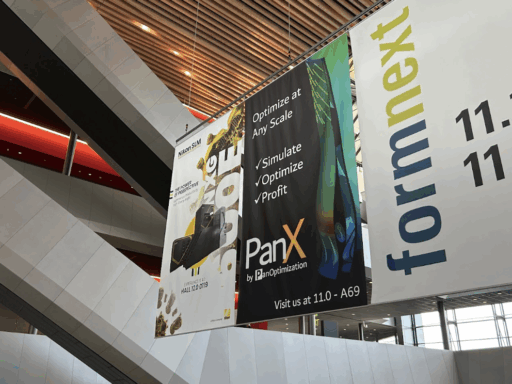A spider-like bot named Charlotte could soon be 3D printing both homes on Earth and bases on the Moon. Presented at the 76th International Astronautical Congress in Sydney, the semi-autonomous robot combines 3D printing and robotics to build structures from raw materials, with no need for bricks, mortar, or scaffolding.
Created by Crest Robotics and Earthbuilt Technology, Charlotte is designed to “move and straddle walls onsite,” Dr Clyde Webster, founding director of Crest Robotics, said in an interview to ABC. Dr Webster admired Charlotte’s technology, describing it as a “spider-like, bio-inspired creation that’s essentially a giant 3D printer, able to print homes out of sustainable materials.”
The robot was developed with not just speed in mind; the priority of the entire project is sustainability. Conventional building materials, including something as simple as a brick, involve multiple carbon-heavy steps. “Earthbuilt takes all of that process and puts it into one single machine,” said Dr Jan Golembiewski, co-founder of Earthbuilt Technology. “Raw materials go in and walls come out. It will work at the speed of over 100 bricklayers.”
With the support from the NSW government’s Space+ program, Charlotte is still in development but has already generated global attention for its potential to redefine construction on Earth and beyond. According to Dr Webster, robotics can be seen as the key to solving both the housing and the labour productivity crisis.
Researchers also agree that the role of automation will be increasingly important in addressing housing shortages. “When there’s an imbalance between the scale of work and the limited pool of skilled people, robotics can really help close that gap,” commented Dr Neda Mohammadi from the University of Sydney.
Charlotte’s creators have big dreams and ambitious plans. One such ambition is to provide space crews with the 3D printing technology capable of constructing a lunar base. “The NASA Artemis missions are returning humans to the moon,” Dr Webster said. “By supporting this technology in an extreme environment like space, we actually make solving problems here on Earth a lot easier.”






